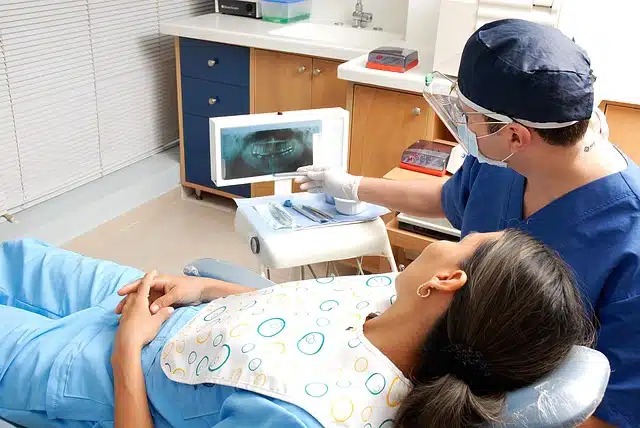It’s not just about offering the best medical treatment in the ever-evolving healthcare landscape. It’s also about providing an exceptional patient experience. This guide explores six intelligent solutions to make patients feel better when choosing your healthcare facility, whether a hospital, clinic or private practice.
Leverage Technology
In today’s rapidly advancing healthcare environment, technology is pivotal in enhancing patient experiences. Leveraging state-of-the-art medical information systems, electronic health records, and telemedicine platforms can streamline communication, improve care coordination, and offer patients more accessible and convenient healthcare options. In this case, explore the internet to find a platform for radiology solutions, then click here to learn more about how radiology solutions can optimize the diagnostic process and improve patient outcomes. These solutions expedite the delivery of critical medical images and provide a secure and efficient means for healthcare providers to collaborate, ensuring that patients receive the best care possible.
Prioritize Clear Communication
Effective communication is at the heart of patient satisfaction. Patients who are well-informed feel more at ease and confident in their healthcare decisions. Healthcare providers should practice active listening. This involves giving patients their full attention, asking open-ended questions, and ensuring they have the opportunity to express their concerns, questions, and fears. Medical jargon can be intimidating and confusing for patients. Using plain language to explain diagnoses, treatments, and procedures makes complex medical concepts understandable.
Demonstrate empathy and compassion in your interactions with patients. Show understanding of their emotions and concerns, and provide emotional support and medical care. Provide patients with written materials or digital resources that explain their conditions, treatment options, and post-care instructions. This empowers them to take an active role in their healthcare. In diverse communities, offering services in multiple languages can enhance accessibility and ensure that language is not a barrier to clear communication.
Personalized Care Plans
Every patient is unique, and their healthcare needs should be treated as such. Personalized care plans consider a patient’s medical history, lifestyle, and preferences. Conduct thorough assessments to understand a patient’s medical history, lifestyle, and specific needs. This information forms the basis of their personalized care plan. Involve patients in the decision-making process for their care. Discuss treatment options, risks, and benefits, and collaborate on a plan that aligns with their goals. Consider a patient’s lifestyle and incorporate it into their care plan. For instance, if a patient leads a very active lifestyle, their rehabilitation plan after surgery may need to account for this. Regularly monitor a patient’s progress and adjust their care plan as necessary. This keeps the plan aligned with their evolving needs.
Streamline Appointment Scheduling
One of the most frustrating aspects of healthcare can be the scheduling process. Streamlining appointment scheduling improves the patient experience and increases efficiency within your facility. Offer an online appointment booking system that allows patients to schedule, reschedule, or cancel appointments at their convenience. This reduces the need for phone calls and provides flexibility. Implement automated appointment reminders via email, text, or phone calls. These reminders reduce no-shows and ensure patients are well-prepared for their appointments. When possible, offer same-day appointments or urgent care services for conditions that require immediate attention. Extend your hours of operation to accommodate patients with busy schedules. This can include evening or weekend appointments.
Enhance Waiting Areas
Patients’ time in waiting areas can significantly impact their perception of your facility. Enhance these spaces to create a more comfortable and positive experience. Provide comfortable seating with ergonomic designs. Consider adding charging stations for electronic devices and reading materials to keep patients occupied. Create a welcoming and calming ambiance with aesthetically pleasing décor, soothing colors, and artwork. Consider the use of natural light to brighten the space. Offer private spaces for patients who prefer more confidentiality, especially when discussing sensitive matters. If your facility serves pediatric patients, dedicate a play area with toys, books, and child-friendly furnishings to keep young ones entertained and distracted. Provide free Wi-Fi access to help patients stay connected and entertained while waiting.
Encourage Feedback and Quality Improvement
Encouraging patient feedback is a crucial step in continuously improving your services. Act on feedback to enhance the patient experience. Distribute patient satisfaction surveys or encourage online reviews. Use the feedback to identify areas for improvement and celebrate your strengths. Invest in ongoing staff training to ensure employees have the skills and knowledge to provide top-notch care and service. Act on feedback by implementing quality improvement initiatives. This might involve refining processes, enhancing communication, or addressing specific patient concerns. Acknowledge and reward staff members who consistently provide exceptional care and contribute to a positive patient experience. Recognition boosts morale and motivation.
In a competitive healthcare landscape, offering the best medical treatment is only part of the equation. Ensuring that patients feel valued and cared for is equally essential. By prioritizing clear communication, streamlining appointment scheduling, creating personalized care plans, enhancing waiting areas, improving access to information, and encouraging feedback and quality improvement, you can make patients feel better for choosing your healthcare facility. This results in happier patients, builds a strong reputation and fosters patient loyalty.
Lucas Noah, armed with a Bachelor’s degree in Information & Technology, stands as a prominent figure in the realm of tech journalism. Currently holding the position of Senior Admin, Lucas contributes his expertise to two esteemed companies: OceanaExpress LLC and CreativeOutrank LLC. His... Read more
